Share the post "Soccer Trapping Techniques for Effective Ball Control: Master the Game!"
A good soccer player can become great using soccer trapping. It’s about receiving and controlling the ball to prepare for a pass, shot, or dribble. Knowing trapping strategies can offer us an edge on the field. We halt the ball and prepare for the next action to make the movement smooth.
Soccer players of all levels need trapping skills. Controlling the ball is crucial whether it’s rolling on the ground or flying through the air. Our strategy changes with the ball’s speed, angle, and spin, from simple inside foot traps to chest or thigh traps. As we practice trapping, we learn to anticipate the action and realize that awareness and positioning are equally as important as trapping the ball.
- Essentials of Soccer Trapping
- Types of Traps
- Trapping Techniques for Different Ball Situations
- Improving Your Trapping Skills
- Common Mistakes and How to Avoid Them
- Advanced Trapping Skills
- Applying Trapping Techniques in Game Scenarios
- Equipment and Gear to Enhance Trapping
- Cultural Impact of Soccer Trapping
Key Takeaways
- Effective soccer trapping enables smooth playmaking and control.
- Situational trapping tactics can be used for incoming balls.
- Advanced trapping requires consistent practice and attentiveness.
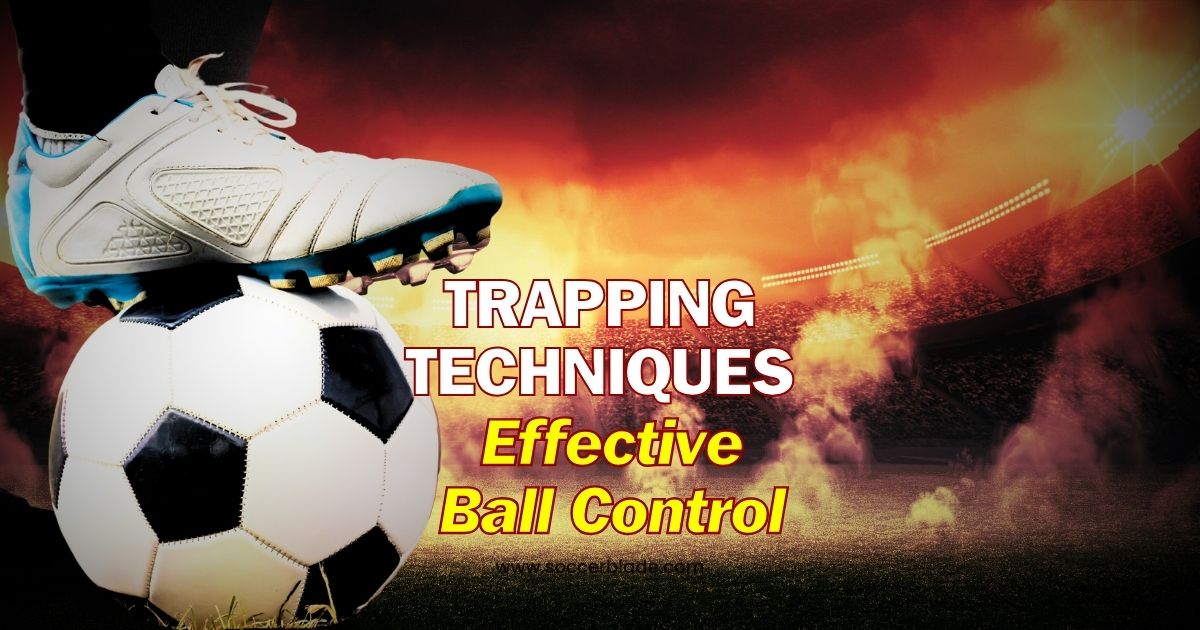
Essentials of Soccer Trapping
In the adrenaline-pumping game of soccer, we recognize trapping as the cornerstone of turning the tide in our favor. Let’s dive straight into the techniques that can elevate our game.
Understanding the Basics
When we talk about trapping in soccer, we’re discussing the skill of swiftly and effectively gaining control of the ball using our body. It’s not just about stopping the ball; it’s about preparing us for the next move, whether it’s a pass, a shot, or a dribble. Different trapping techniques depend on the ball’s speed, our position, and the surrounding play.
Key Principles
- First Touch: Our first touch must be cushioned yet precise. The softer our touch, the easier we’ll control the ball, setting us up for our next action.
- Ball Anticipation: We keep our heads up and anticipate the ball’s trajectory. This allows us to position ourselves optimally, gaining those precious few seconds to make a decision.
- Active Feet: We stay on the balls of our feet, ready to adjust our position as the ball travels towards us.
Trapping Stance and Posture
We adopt a stance that balances readiness and flexibility:
- Feet Shoulder-width Apart: Provides us stability.
- Knees Slightly Bent: Keeps us agile and ready to move.
- Body Leaned Forward: We remain on our toes to facilitate quick movement.
Our posture directly influences our ability to trap and control the ball effectively, making it a fundamental aspect of ball control in soccer.
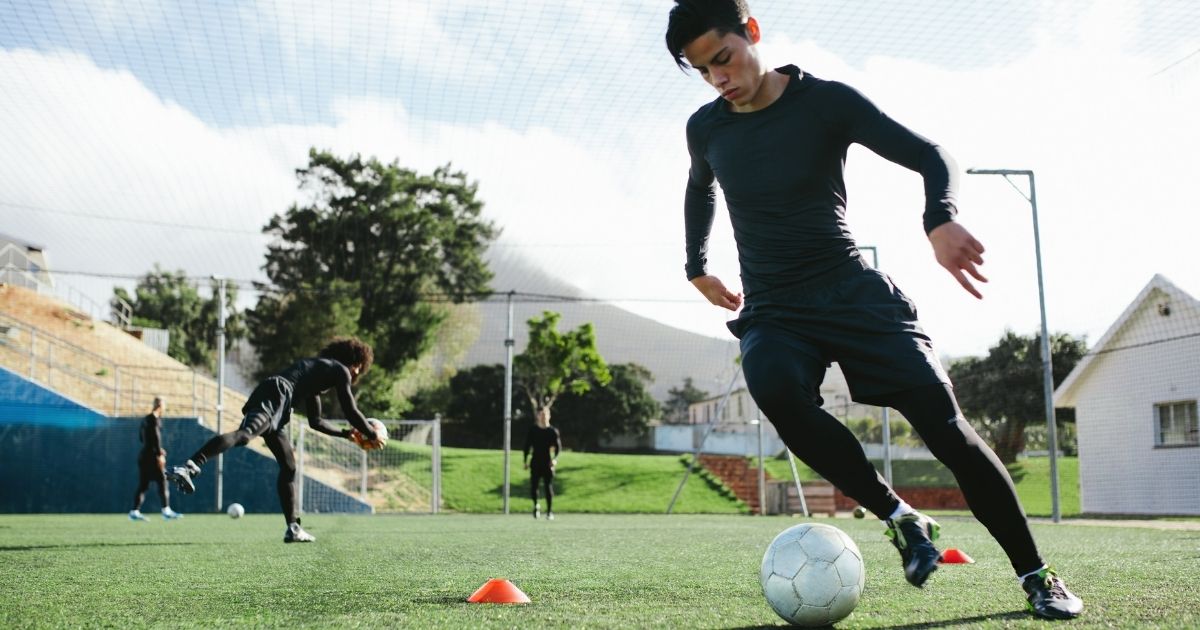
Types of Traps
In soccer, mastering various trapping techniques is essential for controlling the ball and setting up successful plays. Let’s explore some effective traps we can use on the field.
Inside-of-the-Foot Trap
The Inside-of-the-Foot Trap is our go-to method for its simplicity and effectiveness. When we see the ball approaching, we turn our foot so the inside faces the ball, cushioning it gently to stop it right by our side. This is a fundamental skill we must nail for superior ball control.
Thigh Trap
With the Thigh Trap, we adeptly handle those tricky mid-air balls. By lifting our thigh at the right moment, we create a soft barrier, allowing the ball to drop conveniently to our feet. It’s a smooth move that looks just as good as it feels!
Chest Trap
Our Chest Trap is perfect for bringing those high-flying balls back down to earth. We use our chest as a cushion, absorbing the ball’s impact and guiding it downward. It’s a skill that not only looks impressive but gives us immediate command of the ball.
Full Instep Trap
Finally, we’ve got our Full Instep Trap, which is ideal when we need to rapidly reduce the ball’s speed. We use our laced part of the boot to firmly meet the ball, controlling it swiftly for a quick transition into our next move. It’s a powerful technique in our trapping arsenal.
Trapping Techniques for Different Ball Situations
In our soccer journey, mastering different ball traps becomes crucial, particularly as we encounter a variety of ball scenarios on the field.
Ground Balls
For ground balls, one effective method we employ is the inside trap, where we use the inside of our foot to cushion the ball. It’s a basic skill but incredibly handy in controlling the ball swiftly and accurately. This technique is crucial to help us maintain possession and make a quick play.
- Step by Step:
- As the ball approaches, pivot our foot so it’s perpendicular to the ball’s path.
- Gently touch the ball with the inside of our moving foot to deaden its momentum.
Air Balls
When we encounter air balls, our favorite skill to bring the ball down gracefully is using our chest to control it. By doing so, we avoid the ball unintentionally hitting our arms and ensure it settles on a flat surface, which makes it easier to handle thereafter. Learning this can change how we receive long passes, making us a formidable player in aerial challenges.
- Key Actions:
- Lean back slightly and expand our chest to create a broader surface area.
- Make contact with the ball at the center of our chest, cushioning its descent.
Bouncing Balls
Dealing with bouncing balls, we adopt a technique that might involve using our thighs or our feet. For thigh control, we wait for the ball to descend to a manageable height and then we soften the impact by withdrawing the thigh slightly upon contact. If we opt for foot control, we use the top of our foot in a juggling motion to tame the bounce.
- Technique Tips:
- Thigh: Wait for the bouncing ball, then raise our knee and ease the ball to the ground softly.
- Foot: Use a light touch on the top of the ball to keep it close and control the bounce.
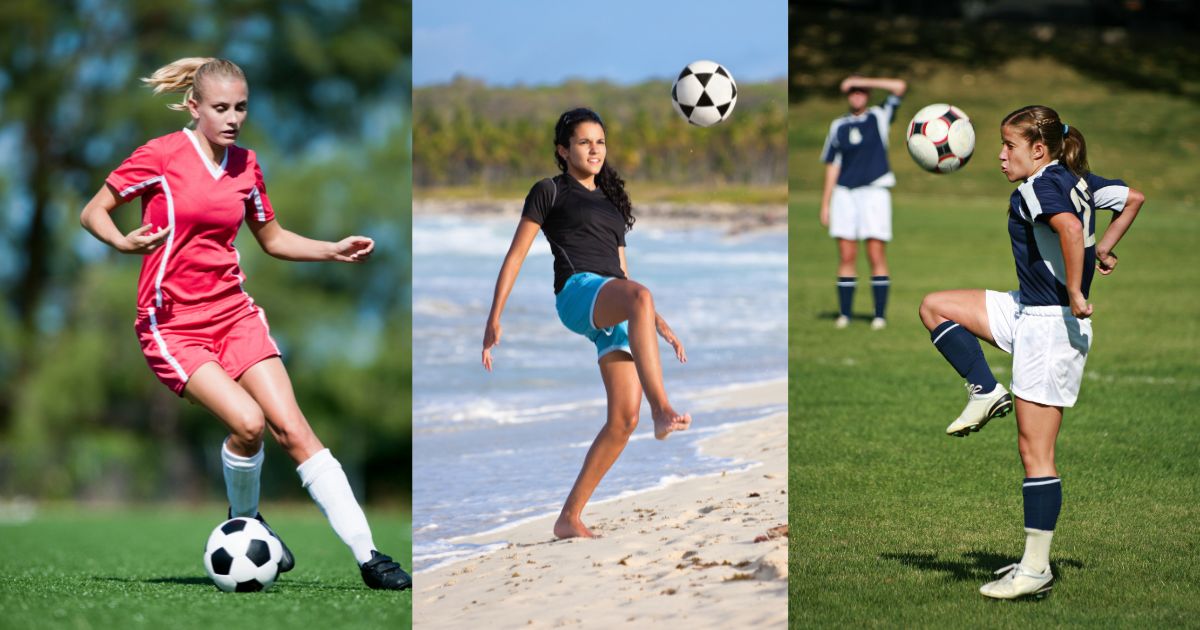
Improving Your Trapping Skills
Excited to take your soccer skills to the next level? We’ve got comprehensive strategies to enhance your trapping abilities, ensuring that you gain better control and can dominate the game.
Drills and Exercises
To improve our trapping skills, we focus on a variety of drills that foster muscle memory and ball control. Using the inside of the foot, we practice cushioning the ball from a throw or a pass, reducing its momentum to a complete stop. It’s essential to repeat these movements to increase our proficiency.
- Chest Control Drill: Throwing the ball upwards and controlling it with our chest to prepare for air balls.
- Thigh Control Drill: Using our thigh to bring a high ball to the ground, we ensure a soft touchdown.
Mental Focus
We develop our mental focus by keeping our awareness sharp during drills. Always scanning the field, we anticipate ball movement and position ourselves advantageously. This readiness allows us to make split-second decisions, vital for effective trapping.
- Visual Cueing: We identify teammates and opponents positions to predict play trajectories.
- Concentration Drills: We practice with distractions to improve our focus under pressure.
Physical Fitness
Our physical fitness is pivotal; it allows us to get into the optimal position for trapping. Endurance and strength training give us the power and stability needed to control the ball with finesse under any circumstance.
- Balance Exercises: We perform routines that improve our ability to control the ball while maintaining a sturdy stance.
- Core Stability Workouts: Engaging our core is crucial for overall balance and effective ball trapping.
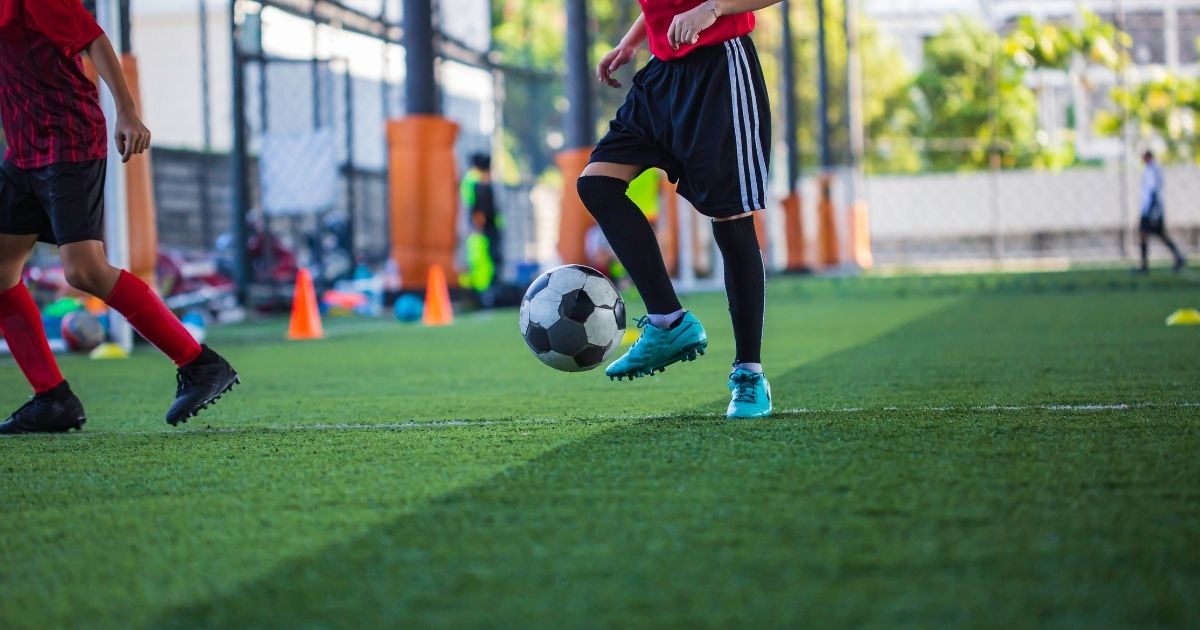
Common Mistakes and How to Avoid Them
In our journey to master soccer trapping, we’ve encountered several common pitfalls. By understanding and addressing these issues, we can improve our ball control and enhance our gameplay significantly.
Misjudging Ball Speed
The first mistake we often make is misjudging the speed of the ball. Watching the ball’s trajectory closely will prevent us from reacting too late or too early. Practicing with different ball speeds can acclimate us to various scenarios on the field.
Poor Timing
Another hiccup can be our poor timing when attempting to trap the ball. Timing is crucial, so focussing on the moment of contact and anticipating the ball’s arrival is key. Regular drills that simulate game situations can help refine our timing.
Lack of Concentration
Sometimes we lose focus, and thus our concentration falters, leading to a missed trap. To avoid this, let’s ensure we’re mentally present on the field, always expecting the ball to come our way. Keeping our eyes on the ball until we’ve securely trapped it will keep mishaps at bay.
Inadequate Body Positioning
Lastly, we’ve noticed that incorrect body positioning often leads to ineffective trapping. Presenting the largest surface area to the ball and keeping our body between the opponent and the ball is essential. We can consult a thorough guide on body positioning to get this technique just right.
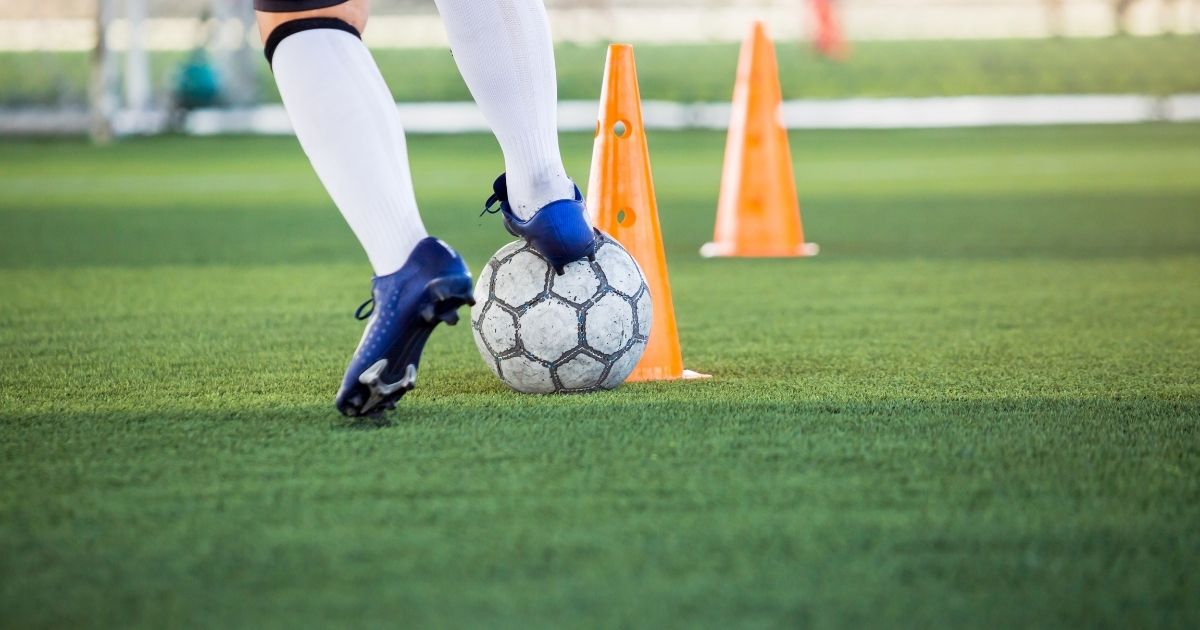
Advanced Trapping Skills
In this section, we delve into sophisticated ball control methods that can elevate our game. By mastering advanced trapping skills, we equip ourselves to handle the ball deftly under diverse and challenging situations.
Trapping Under Pressure
We recognize the intensity of trapping when opponents bear down on us. The key is to maintain composure and body balance. By angling our body to shield the ball and using a soft touch, we can absorb the ball’s momentum and keep it close. The insider soccer tip involves using the inside of our foot as it’s the most controlled surface we have. Another trick is to cushion the ball with our instep when facing high-speed passes – it’s a game-changer in maintaining possession under duress.
Quick Transition to Playmaking
After trapping the ball, it’s crucial we transition smoothly into playmaking. This requires keen awareness and the ability to make rapid decisions. One effective technique we often bypass is using the trapping momentum to our advantage; a deft trap can directly transition into a pass or a shot.
By scanning the field as we receive the ball, we’re ready to execute a quick play. Perfecting a trap that sets us up for the next move — whether it’s a strategic pass or a drive toward the goal — defines our skill as advanced players.
Applying Trapping Techniques in Game Scenarios
In soccer, the way we trap the ball can make a crucial difference between maintaining possession and losing it to the opponent. Each area of the field requires a distinct approach to trapping, and mastering these can elevate our overall gameplay.
Defensive Trapping
In defense, our primary goal is to prevent the ball from advancing and regain possession as quickly as possible. The Inside Trap is our go-to when facing an incoming ground pass – it allows us to cushion the ball effectively with the inside of our foot, gaining immediate control. By staying on our toes and reading the game, we can choose whether to clear the ball or make a safe pass to a teammate.
Defensive trapping often occurs under high pressure, so it’s imperative we stay calm and choose the trapping technique that best suits the situation.
Midfield Control
As we advance to the midfield, the dynamics change – we’re at the heart of the action. Here, the thigh trap becomes invaluable for bringing aerial balls down with finesse, facilitating a smooth transition to attacking plays. The step trap is another effective technique we use in the midfield to swiftly stop the ball and shift our momentum to either side.
Successful trapping in the midfield creates opportunities and space for setting up plays, and the better we trap, the better our chances of controlling the tempo of the game.
Attacking Plays
Once we’re in the attacking third, trapping is all about creating scoring opportunities. Utilizing a chest trap to bring high balls down to our feet sets us up for a shot or a quick pass to a forward. The Cushioning technique is also crucial when receiving passes in the box, as it sets us up for an immediate strike on goal.
Timing, angle, and a soft touch are key; an effective trap can mean the difference between a fluffed shot and a nifty goal. Our objective in attacking plays is to stay unpredictable, using various traps to keep defenders guessing.
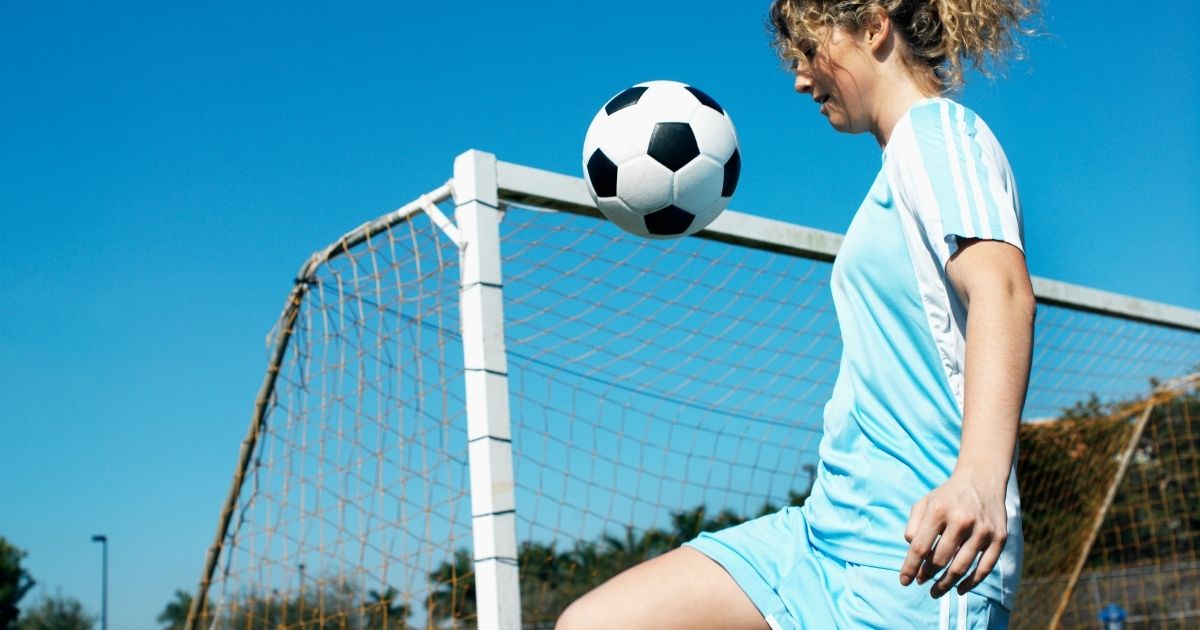
Equipment and Gear to Enhance Trapping
In soccer, the right equipment can significantly improve our trapping skills. Let’s explore how specific gear helps us take control of the ball with confidence.
Appropriate Footwear
Cleats – The foundation of effective trapping lies in our choice of cleats. Look for cleats with:
- Touch: A textured upper surface enhances ball feel for precise control.
- Comfort: Properly cushioned insoles reduce impact and allow for better ball manipulation.
- Fit: Snug-fitting shoes ensure a secure grip, allowing us to react quickly and trap effectively.
Selecting cleats specialized for control, like those with non-marking rubber soles for indoor play, can be a game-changer for players looking to excel in trapping techniques.
Training Aids
Cones and Targets – We can use these to sharpen our precision and timing, crucial components of trapping. By setting up drills that mimic match scenarios, we improve our ability to trap under pressure.
- Cones: Ideal for dribbling and trapping exercises in tight spaces.
- Targets: Practice aiming our traps towards specific points, increasing our accuracy.
Rebounders and Pass Walls – These are fantastic for repetitive trapping practice. We can focus on:
- Rebounders: Work on our first touch with varied ball speeds and angles.
- Pass Walls: They offer a consistent return, helping us fine-tune our receiving technique.
By incorporating these aids into our training routine, we cultivate a sharper, more refined approach to trapping the soccer ball.
Cultural Impact of Soccer Trapping
We’ve witnessed how soccer trapping techniques have not only elevated the game but also left an indelible mark on the cultural tapestry of the sport. Let’s explore the profound influence on playing styles and the historical evolution that showcase this impact.
Influence on Playing Styles
We can see distinctive playing styles develop in different soccer cultures, largely due to their trapping techniques. In Brazil, players often display an expressive and fluid approach to trapping, contributing to a dance-like rhythm on the field. Comparatively, the Spanish tiki-taka playing style hinges on crisp, accurate traps that facilitate rapid, short passing.
Historical Evolution
Throughout soccer’s history, our understanding of trapping has significantly advanced. Initially a means to simply stop the ball, trapping has evolved into a nuanced skill. We’ve seen legends like Johan Cruyff and Diego Maradona transform trapping into an art form, influencing generations to approach the ball with both respect and creativity.
Share the post "Soccer Trapping Techniques for Effective Ball Control: Master the Game!"
Joel is a seasoned soccer journalist and analyst with many years of experience in the field. Joel specializes in game analysis, player profiles, transfer news, and has a keen eye for the tactical nuances of the game. He played at various levels in the game and coached teams - he is happy to share his insight with you.



